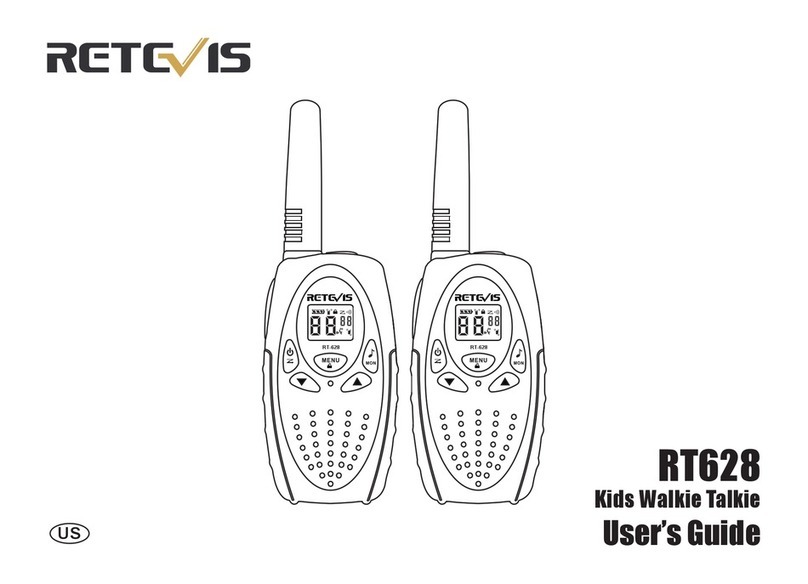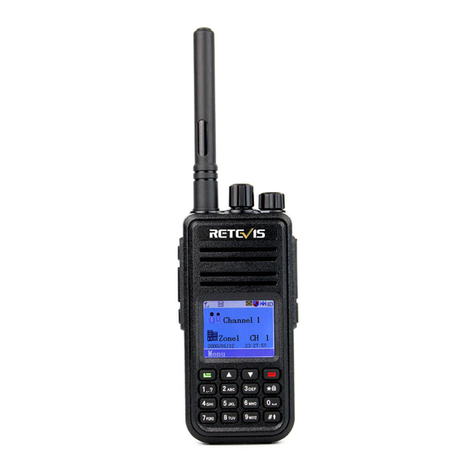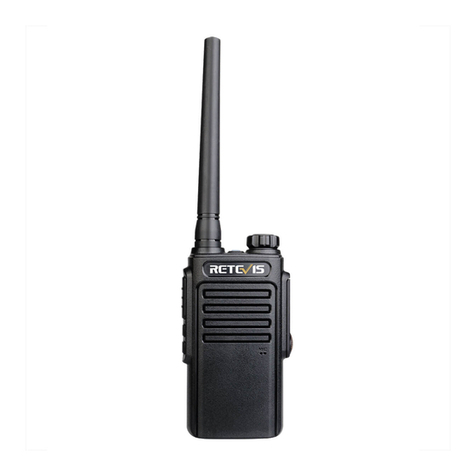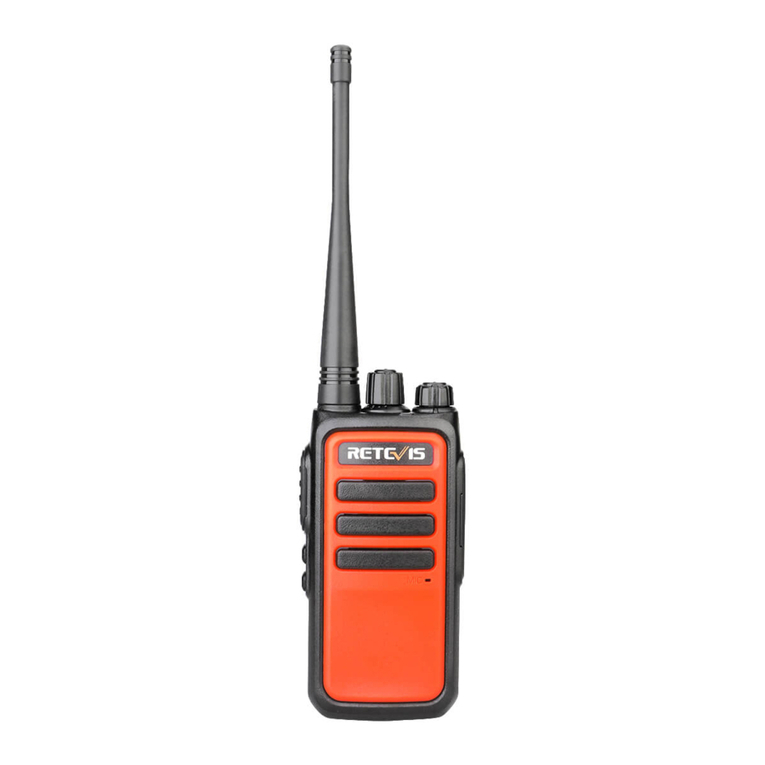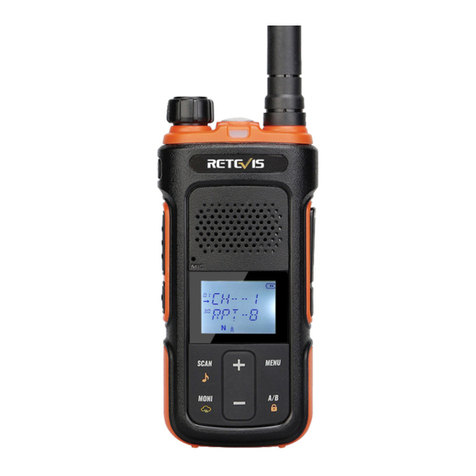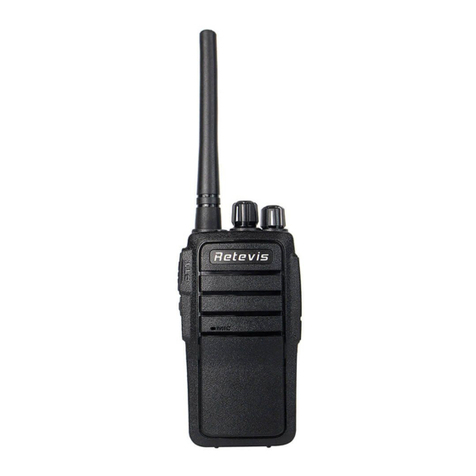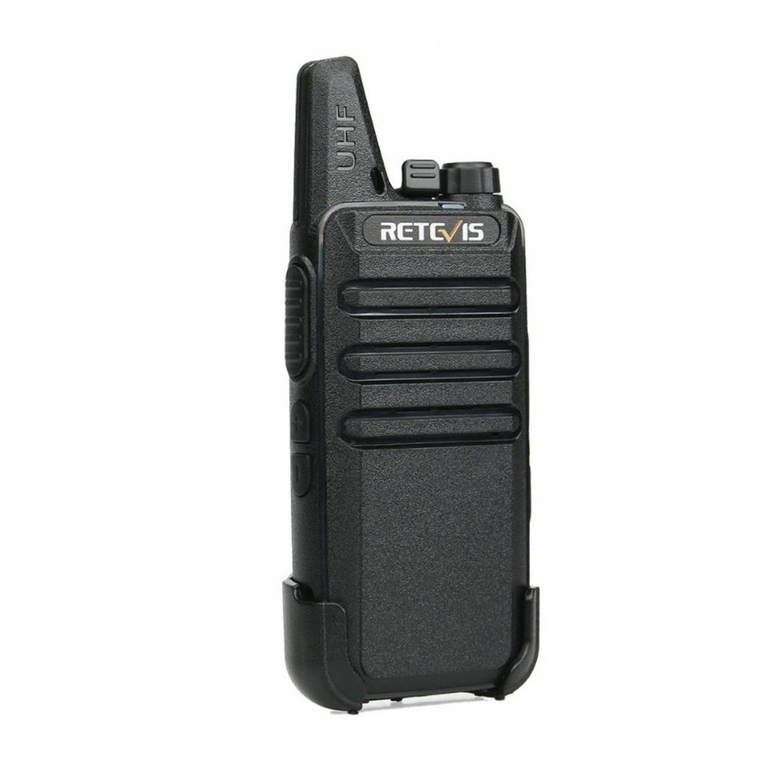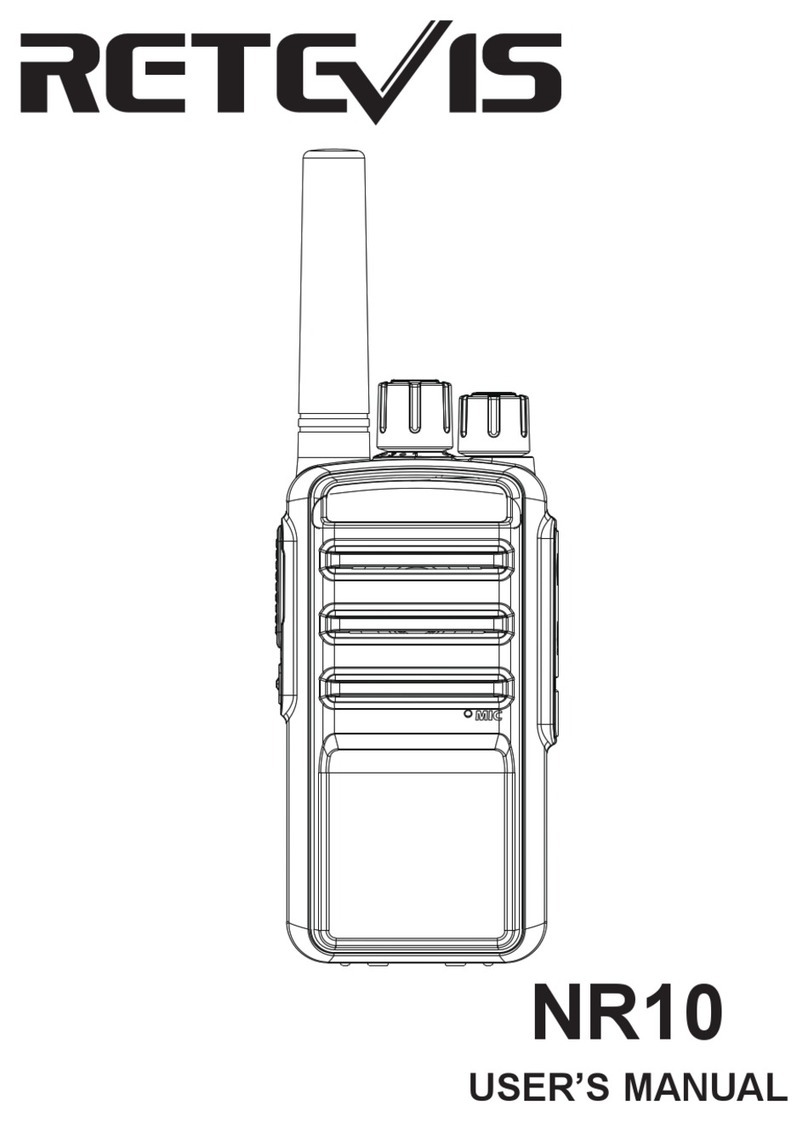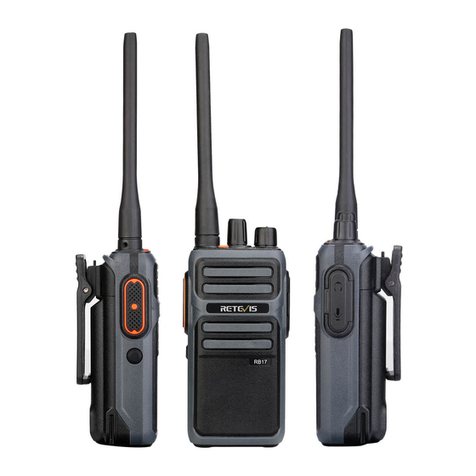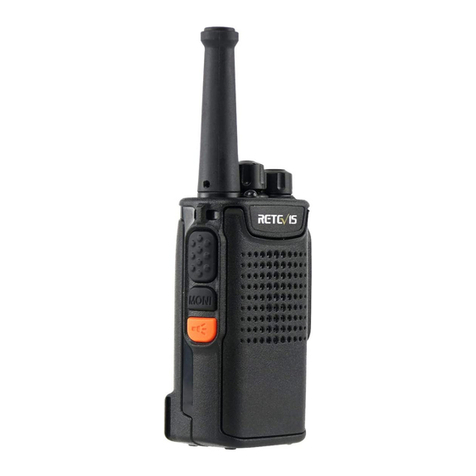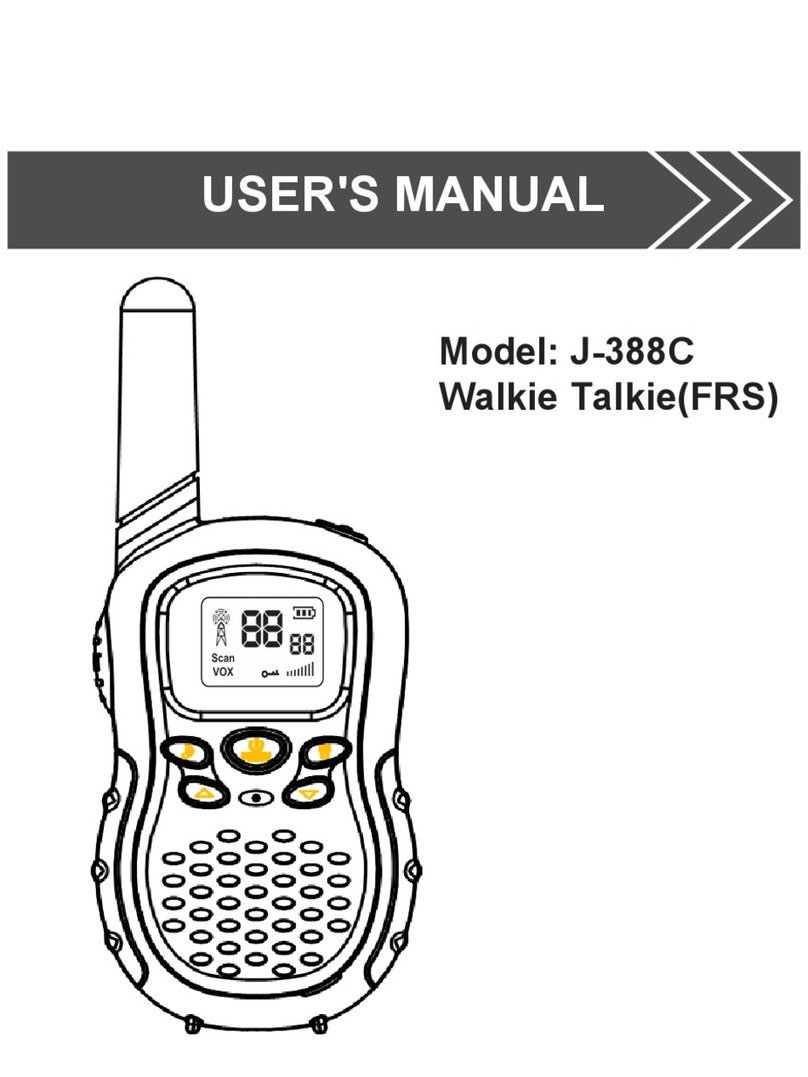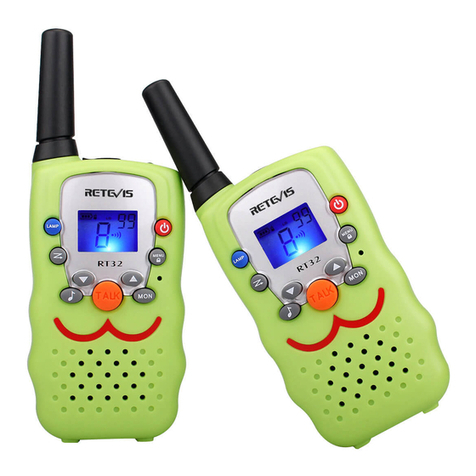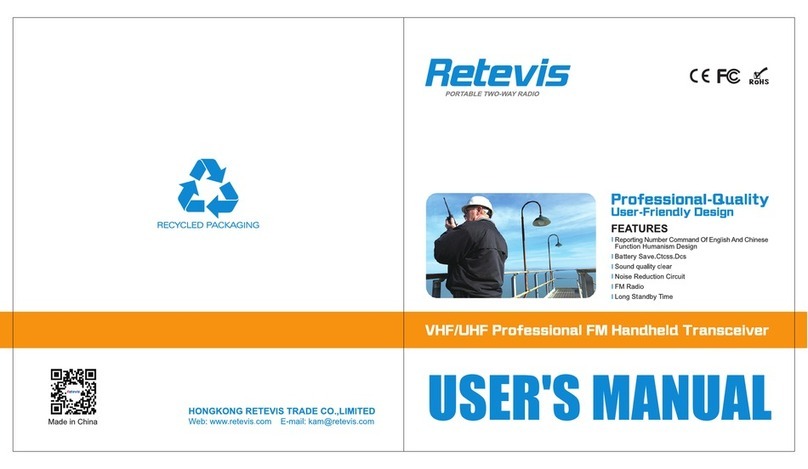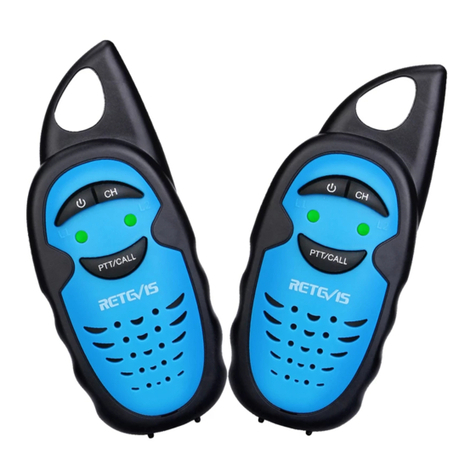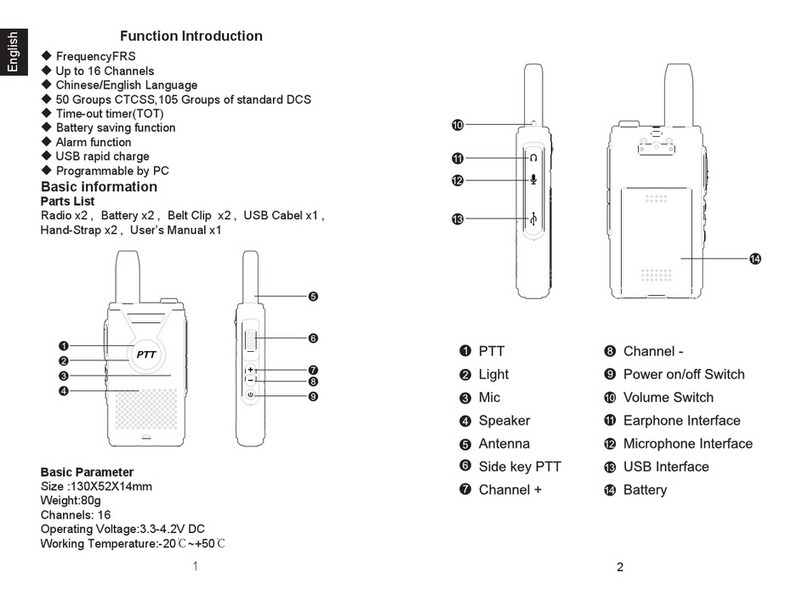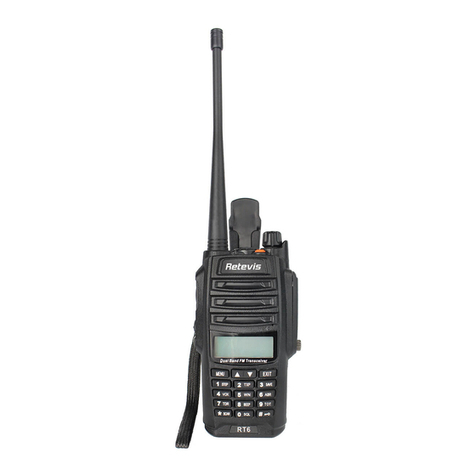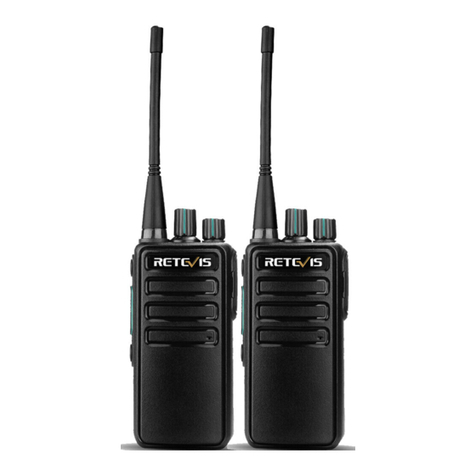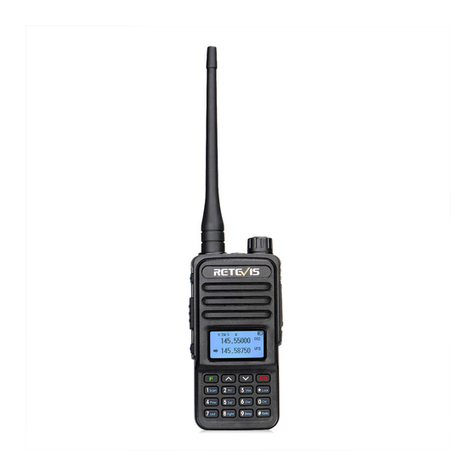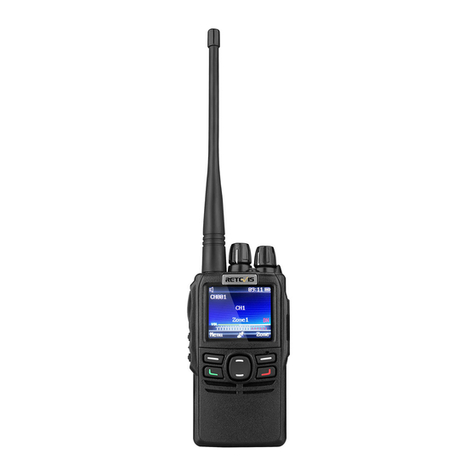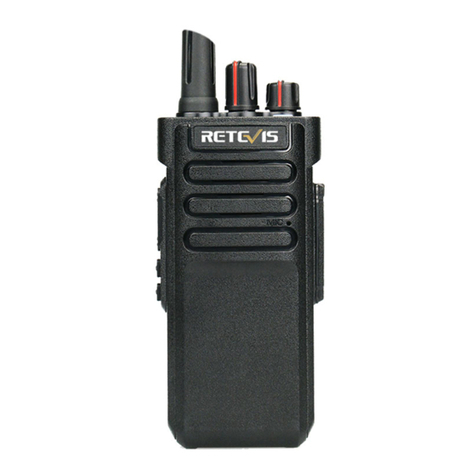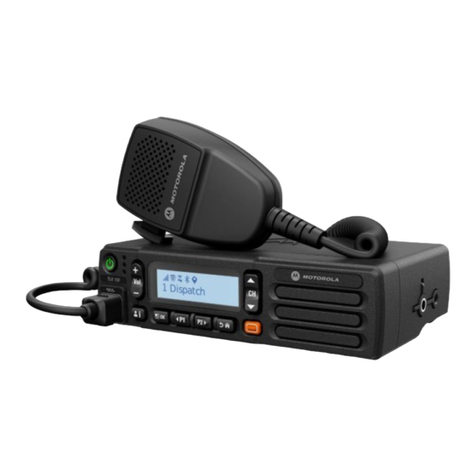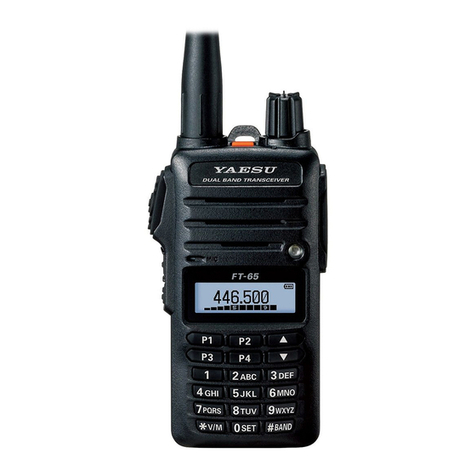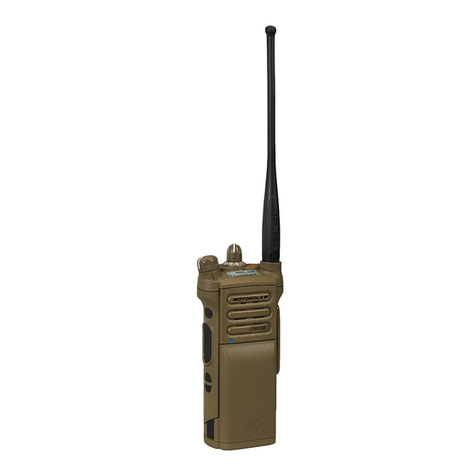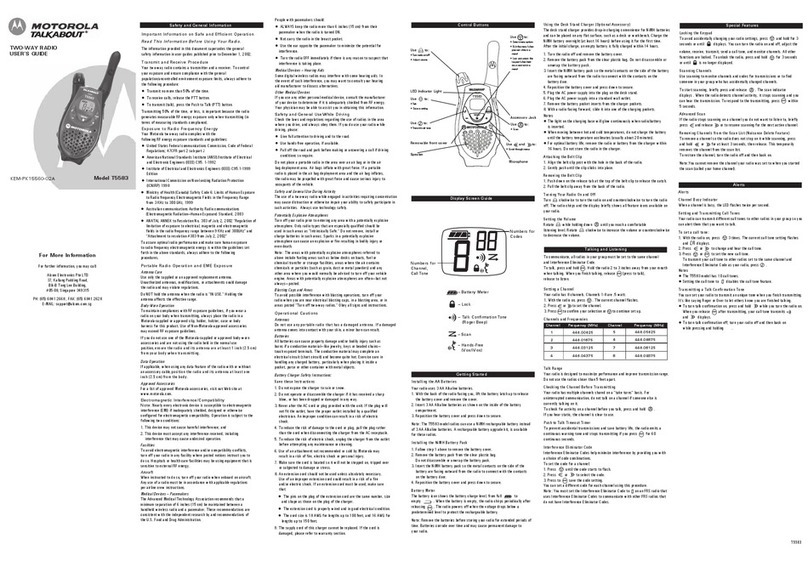
EN- 7
Keypad Tones
Your radio emits a beep each time one of the
buttons is pressed (except the PTT and button).
Press and hold the button while turning the
radio ON to switch the keypad tone ON/OFF.
Roger Tone
You can set your radio to transmit a unique tone
when you finish transmitting.
Press and hold the button while turning the
SPECIAL FEATURES
radio ON to turn the Roger Beep ON. Repeat the
step to turn Roger Beep OFF.
Keypad Lock
To avoid accidentally changing your radio settings:
1. To lock the radio, press and hold button
until the key lock indicator icon on display
appear.
2. To unlock the radio, press and hold button
until key lock indicator icon on display
disappear.
Scanning Channels
Use scan to search all channels for transmissions
from unknown parties, to find someone in your
group who has accidentally changed channels or
to quickly find unused channels for your own use.
To Start Scanning:
1. Briefly press the button, the icon
will appear in the display and the radio will
begin to scroll through the channel and code
combinations.
2. When the radio detects channel activity matching
the channel and code combination, it stops
scrolling and you can hear the transmission.
3. To respond and talk to the person transmitting,
press the PTT button within 5 seconds after
the end of the transmission.
To set another channel and start Dual Watch.
1. Press button until '2CH' appears on the
display. The current setting (OF, 1-16) will flash.
2. Press or to select channels.
3. Press the PTT button to exit menu or
button to continue setup.
4. Press the PTT button or wait until the time
out menu to activate Dual Watch. The screen
will alternate between Home Channel and
Dual Watch Channel.
To end Dual Watch mode, re-enter Dual Watch
menu to select the OFF setting.
Note: If you set the same channel and code as
current channel, Dual Watch does not work.
